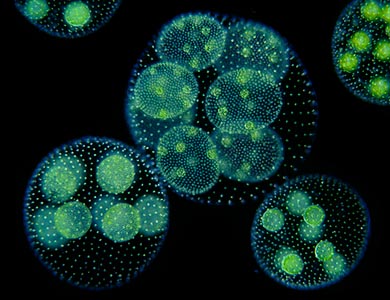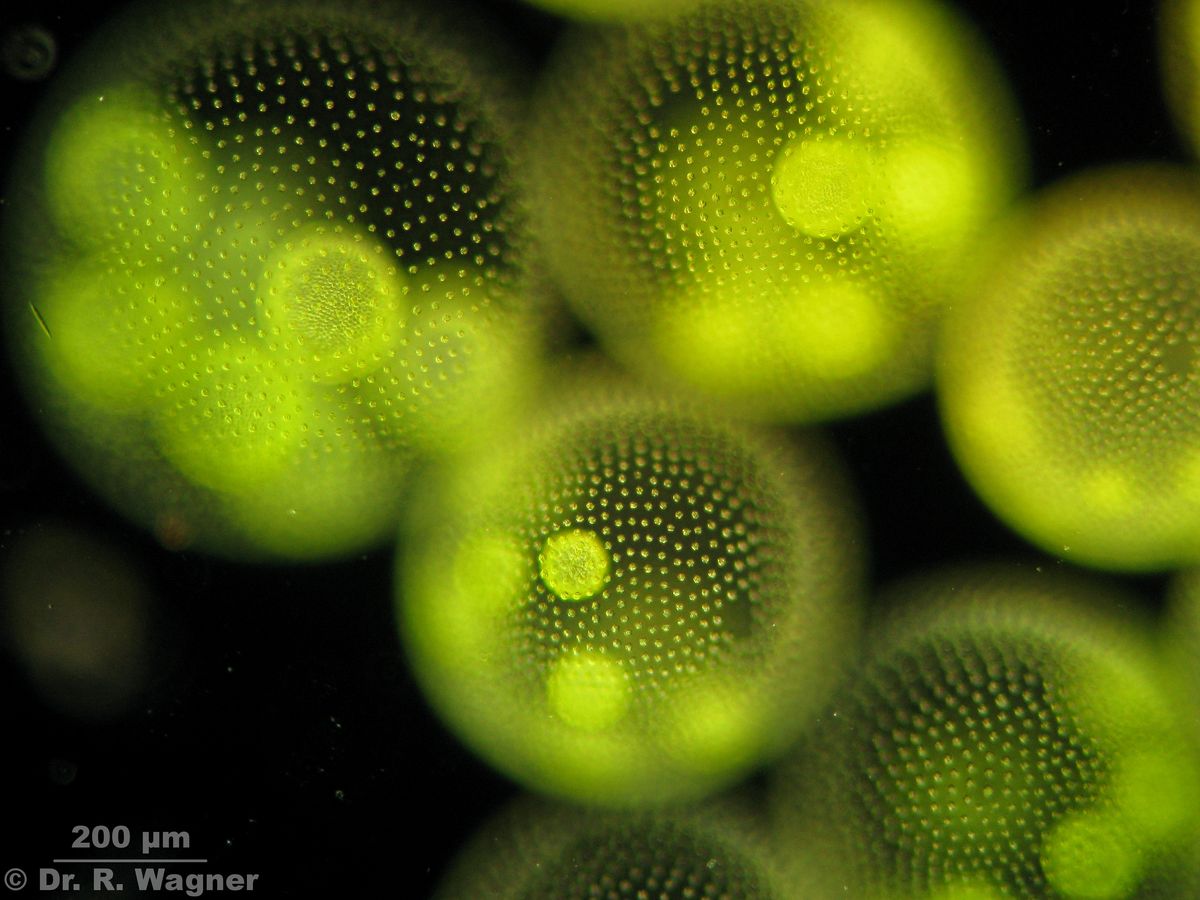Trying to think up topics I'd be interested in researching in the time I don't really have to spare. This means I do "research" in classes and skim articles that link to more articles...in a never ending trail of article crumbs.
Here's the conclusion I reached today:
Volvox sp. are definitely the most beautiful algal species I've ever stumbled across.
Here's what I know about them from eavesdropping on 2 snippets of random conversations between profs and grad students:
- some kind of green algae
- the outside (surrounding) circle is the parent/progenitor cell
- the inside circles are it's daughter cells
- the circles inside circles (i.e. top cell in the photo) are the grandaughter cells
- this means that volvox keep their babies inside of them until they're big enough to be (potentially?) too big for predators, or better developed, or something
- this also means they're multicellular!
- the intercellular space is made up of some kind of jelly
- this process of holding future generations inside of them? it can go on for many more generations, supposedly. i.e. daughter cells within daughter cells within daughter cells within daughter cells within....
Here's what I learned today, from reading this article from ScienceDaily:
- volvox evolved multicellularity ~200 million years ago (mya)
- they did this in ~35 million years - which sounds like a lot of years, but when you compare it to the 4 billion years of earth history, is pretty much no time at all
- they live in freshwater ponds mostly
- some species (because volvox is a genus comprised of lots of different species) are unicellular, some are multicellular, and some even have division of labor where some cells only swim and other cells of the same organism are only reproductive
- they may have made the transition from unicell to multicell by banding together using that jelly-like substance
- the next trait that is thought to have evolved was the ability to retain daughter cells within the banded-together clump, so that no individual cell inside the clump would be tempted to cheat and gain better reproductive advantage over cooperating cells
- The Triassic period was ~200mya
And now here's some more Volvox, because something so round and bubbly and full of daughter cells is just impossible to resist. Biology is just freaking crazy, sometimes.



